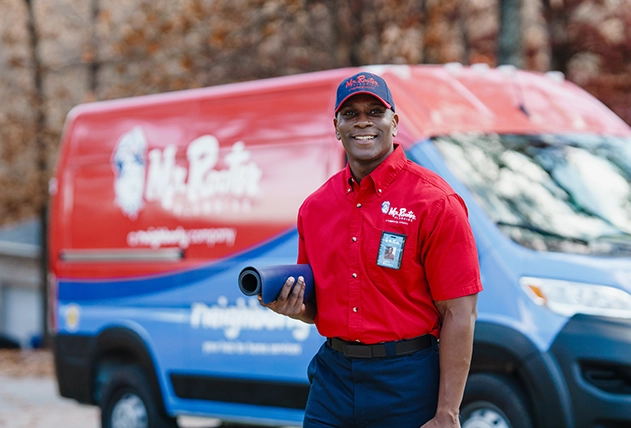
A seized garbage disposal can be one of the most frustrating issues in your kitchen. The hum of a jammed motor or the complete silence of an unresponsive unit can put a damper on your day. Addressing the issue promptly is essential to avoid more significant problems, such as leaks, odors, or even permanent damage. While garbage disposals are built to handle daily kitchen waste, they’re not invincible, and issues can arise over time.
In this guide, we’ll walk you through simple DIY fixes to get your garbage disposal back in working order. We’ll also help you understand when to set the tools aside and call a professional plumber in Douglas like Mr. Rooter® Plumbing of Southeast Georgia.
Diagnosing the Problem: What’s Causing the Seize?
Before jumping into repairs, it’s important to identify the root of the problem. Diagnosing the issue helps ensure you're applying the right fix and can save you time and effort.
Here are some common signs your garbage disposal is seized:
- Humming noise: The motor is running, but the blades aren’t turning.
- No grinding: Food waste isn’t being processed.
- Complete silence: The unit is getting no power at all.
- Power outage after turning on: This could indicate the disposal has tripped its internal circuit or a fuse.
If you’ve noticed any of these signs, it’s time to move on to the next steps.
Safety First: Turn Off the Power
Before doing anything, safety should always come first. Garbage disposals are powerful machines, and attempting to fix them while they’re powered can lead to serious injuries.
Follow these steps to safely disconnect the power supply:
- Turn off the switch: Locate the switch controlling the disposal on your kitchen wall.
- Unplug the unit: If the disposal is connected to an outlet under the sink, unplug it.
- Turn off the circuit breaker: For added safety, switch off the circuit breaker that supplies power to the disposal.
Once the power is fully disconnected, you can safely proceed with troubleshooting.
Step 1: Reset the Garbage Disposal
Often, the simplest fix is all you need. Garbage disposals have a built-in reset button to protect against electrical overloads. Resetting the unit can restore functionality if it has shut off due to overheating or a blockage.
Here’s how to reset your garbage disposal:
- Locate the small red reset button on the bottom of the unit.
- Press the button firmly. If it’s popped out, this indicates the disposal needs a reset.
- Restore power and test the unit by flipping the switch.
If the disposal starts working again, you’re in the clear. If not, it’s time to move on to the next potential fix.
Step 2: Clear Any Blockages
Food debris, bones, or other foreign objects can jam the blades and cause your garbage disposal to seize. Clearing blockages is a straightforward process, but it requires care and precision.
Follow these steps to manually clear blockages:
- Turn off the power: Double-check that the unit is powered off.
- Locate the hex key slot: On the bottom of most disposals, you’ll find a slot for a hex (Allen) key.
- Insert the hex key: Using the hex key that came with your disposal (or any matching size), rotate the blades manually by turning the key clockwise and counterclockwise. This will dislodge any stuck debris.
- Check inside: Shine a flashlight into the disposal’s opening and, using tongs or pliers, carefully remove larger objects. Never put your hands into the disposal!
Once the blockage is cleared, restore power and test the unit.
Step 3: Try the Plunger Method
Sometimes, a plunger can help dislodge stubborn clogs that are causing the disposal to seize. This method works particularly well if the blockage is deep within the unit or the connected plumbing.
Here’s how to use a plunger:
- Fill the sink with enough water to cover the disposal drain opening.
- Place the plunger over the drain to create a tight seal.
- Use firm but gentle plunging motions to build pressure and dislodge the debris.
- Remove the plunger and check if the water drains properly.
After plunging, test the disposal to see if it’s back in working condition.
Know When to Call a Professional
While these DIY fixes can address many common issues, there are times when professional help is necessary. Persistent problems, leaks, or electrical issues may require the expertise of a licensed plumber.
Here are some signs it’s time to call a professional:
- The disposal still won’t work after resetting and clearing blockages.
- There’s a leak under the sink or around the disposal unit.
- Electrical issues persist, such as frequent tripping of the circuit breaker.
- You notice unusual smells, grinding noises, or blades that appear damaged.
Attempting complex repairs on your own can lead to further damage and higher costs, so don’t hesitate to seek expert assistance.
Contact Our Expert Plumbers in Douglas
A seized garbage disposal is inconvenient, but with the right approach, you can resolve many issues on your own. By diagnosing the problem, taking safety precautions, and trying these simple fixes, you can save time and money while restoring your disposal's functionality.
However, remember to recognize when a problem requires professional attention. If you’re in Douglas and need help with a stubborn garbage disposal, our team at Mr. Rooter Plumbing of Southeast Georgia is just a call away. Our experienced plumbers are equipped to handle any disposal issue, from repairs to replacements.
Check our availability for help repairing your garbage disposal!

